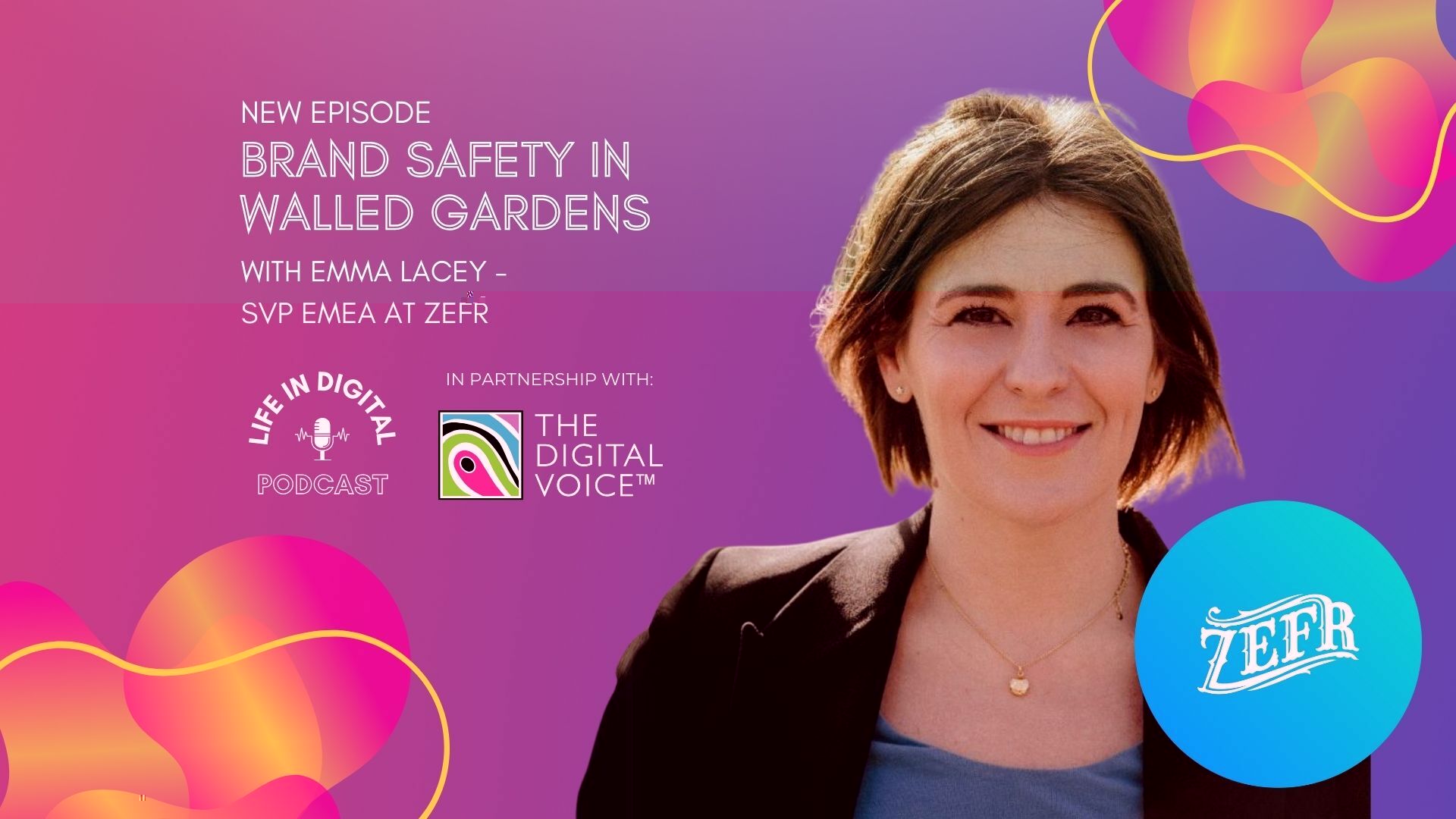How to make media and creative fit for progress - with RMA’s Hannah Mirza
28 Nov, 20235 minsIn the ever-changing world of digital marketing, just keeping abreast of advancing tech and ...

In the ever-changing world of digital marketing, just keeping abreast of advancing tech and processes can be a challenge - let alone adding sustainability to the modern marketer’s considerations.
Putting environmental goals on the company map is a difficult task. Marketing teams need to further translate them into consumer-facing solutions to ensure they are working, both for people and the planet.
In the latest episode of Life in Digital, founder of Responsible Marketing Agency Hannah Mirza reveals how her agency is helping businesses prioritise sustainability, as well as some of the steps advertisers can take to maintain best practice while ultimately cutting carbon emissions.
Hannah also delves into the importance of optimising the supply chain as part of a more responsible approach to marketing.
Paving a path to sustainability
Hannah’s journey to sustainable marketing came from her passion to embark on a job that was meaningful and mirrored peers in her personal life, who worked in humanitarian industries. She was lucky enough to start her career at Advertising.com, an early stage digital publishing network, where she was able to carve her own path in digital and media from there.
Then, as demand for social change and environmental goals was starting to take centre stage, Hannah seized the opportunity to start a different kind of marketing and media consultancy.
The Responsible Marketing Agency helps businesses at all stages of their sustainability journey, keeping growth and effective marketing at the core, but with positive social impact as a constant thread.
Many companies are trying hard to make their marketing efforts sustainable, Hannah notes, but the process can be a challenging one. “What I’ve observed is, there is a lot of intention, and a lot of action,” she says. “But with that action comes a certain amount of confusion in terms of what to do to move forward.”
Hannah believes creating a business case can be the best way to educate stakeholders and demonstrate the importance of sustainable practices.
“Our sweet spot is stepping in and saying ‘Don't worry, we'll help you. We'll write your strategy. We'll get you going’,” she says. “It’s about showing what their pathway is and how to put it into practice.”
Hannah says tackling sustainability is a tale of two halves: first, the delivery and how you operate in terms of advertising, comms and marketing; and second, the messaging that is being delivered to consumers, and whether that is also driving and enabling social change.
“With the social piece, it's about inclusion and diversity; how we're looking at representation in front of the camera, behind the camera, and also where you distribute,” says Hannah. “Then it’s about where you drive your media buying, as well as things like brand safety and consumer privacy and protection.”
Optimising that path (with the right tech)
There are, of course, a number of tech partners and suppliers that offer a variety of sustainability tactics and ways of measuring campaigns, but it can be hard to know where to start. The range of choice confounds the supplier challenge, as brands and publishers are faced with inconsistencies when it comes to metrics, data and methodology.
The Responsible Marketing Agency is not driven by trading deals or preferential partners, Hannah notes, so it can provide unbiased, thoroughly researched recommendations.
“The benefit of being a small independent consultancy is that we are truly neutral in terms of our advice and recommendations,” says Hannah.
Recently, RMA has teamed up with Global Alliance for Responsible Marketing (GARM) to drive the industry standard for carbon measurement. GARM has created a Guide to Sustainable Media which sifts through the noise and helps media organisations make simple changes in order to cut their emissions.
Hannah recommends that where possible, businesses should trial multiple suppliers to gain tangible experience and use the learnings to make informed decisions.
“Once you’ve created a business case for your actions, you need to review your processes, including looking at who you work with in your supply chain,” she says. “This also includes reviewing your data storage and tagging and tracking.”
There are also quick wins that can reduce your emissions, such as changing the time of day and day of week you flight your campaigns, moving to times when the energy grid is under less strain.
The sustainable marketing space is moving fast and as Hannah says, there are many resources popping up in terms of best practice and advice. Unlike other advances in marketing, this space is heavily focused on freely sharing guidance and encouraging the greatest possible number of companies to work together more responsibly, rather than competing.
Hannah concludes: “The education piece is at the heart of responsible marketing, so ensuring that everyone in your business understands the wider social and societal impact is imperative, as well as the initiatives themselves.”
Only by doing this - and being rigorous in the supplier selection process - can you be confident your media and marketing practices are fit for progress.
You can find the full episode and more on our Life in Digital podcast. To find out more about making your business more sustainable get in touch with the Responsible Marketing Agency.




